Editor’s Note: The following is not legal or tactical advice. Whenever possible, contact law enforcement rather than engaging a potential threat on your own in your home.
Watching someone with tactical training clear rooms is fascinating for me, and probably for quite a few that are fascinated by tactics used by military and law enforcement organizations. The precision they use, the decisions they make and the reasons why they do it the way they do always intrigue me.
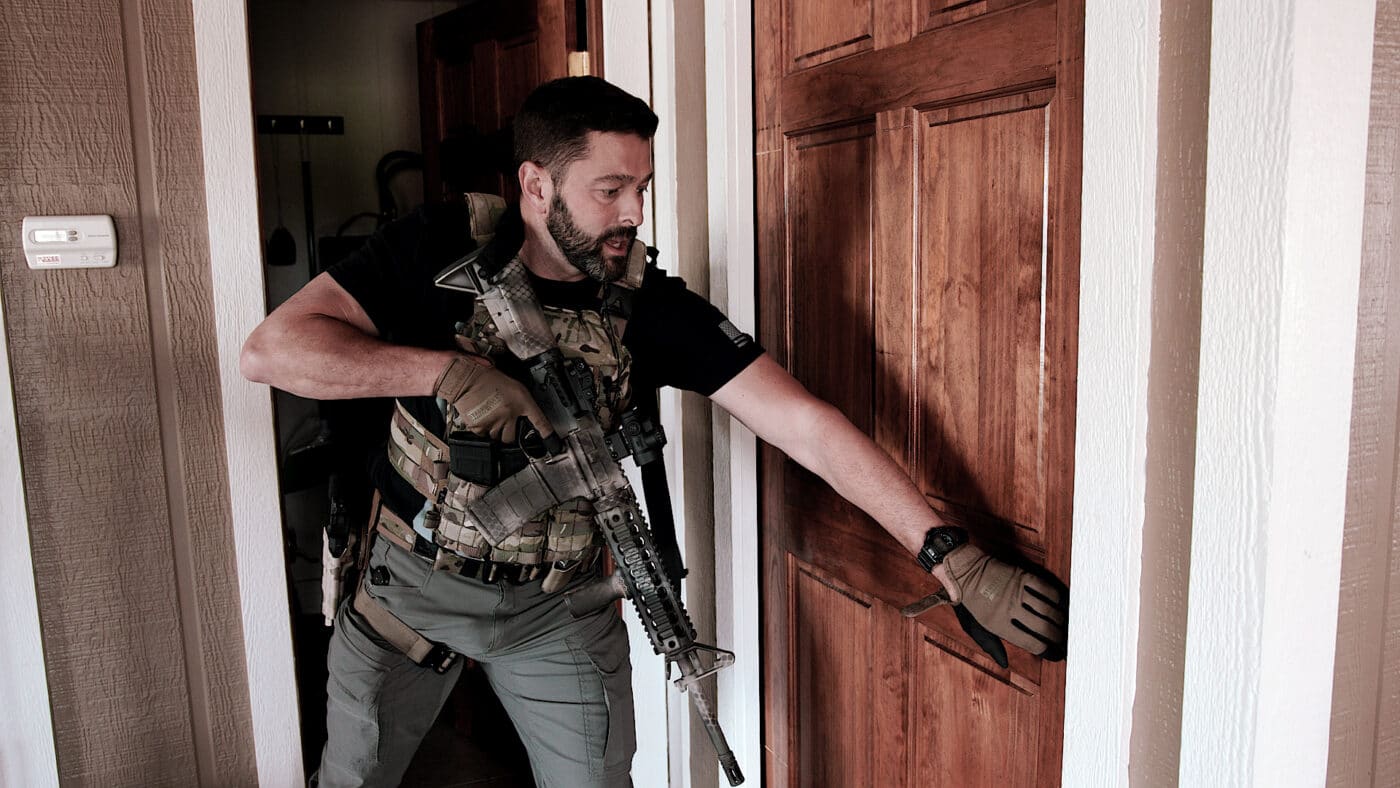
We asked our trainer here at GunSpot, Grant LaVelle, to give us a demonstration of one-man room clearing. We meant to get as many different scenarios as possible for LaVelle to provide the best experience possible for the viewers of our content. Also, we ended up finding the perfect location to stage the clearing.
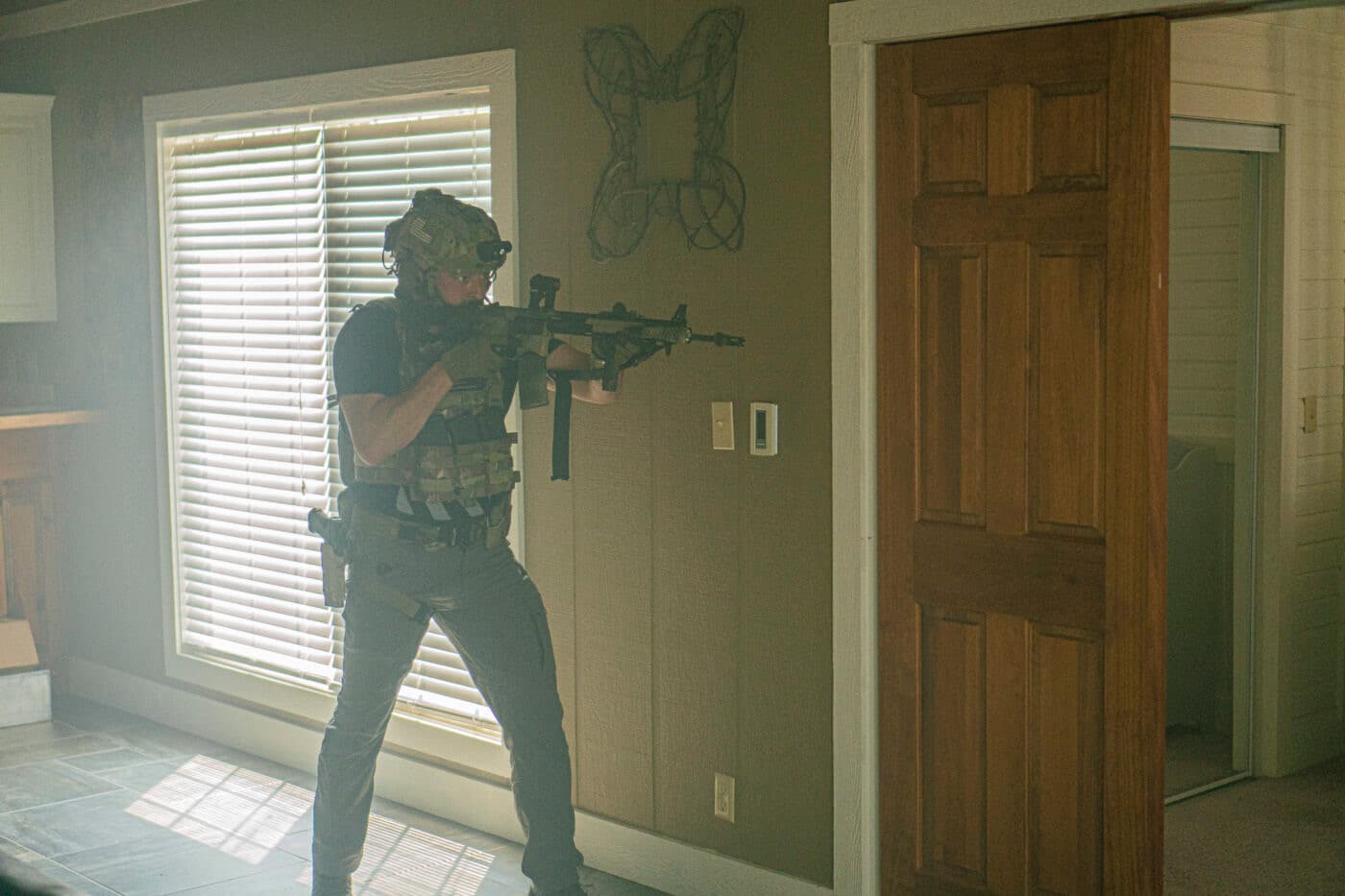
The home is a small two-story cabin that offers a variety of different challenges. The staircase itself is a corner staircase with a plateau the middle of the way up. At the plateau, there is a loft and the continuation of the stairway in opposite directions. This introduced a two-way threat similar to having a long hallway and being stuck in the middle. The other challenge is having a place two pocket doors, and two closed doors right beside each other in a corner. That meant that to open one door, you must stand in front of another.
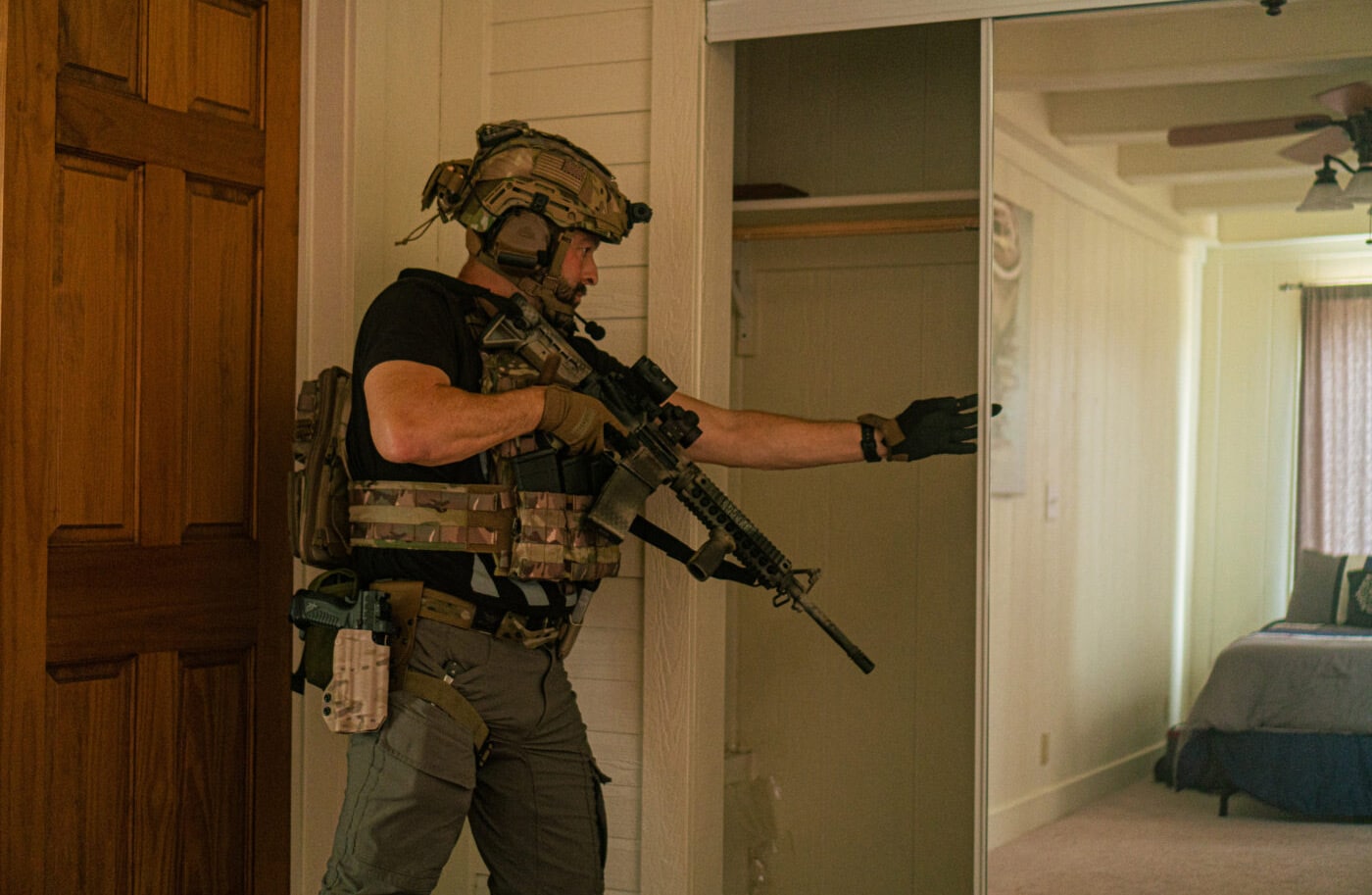
All of these present challenges that we were intrigued to get LaVelle’s professional input on. LaVelle served in the United States Marine Corps as well as serving a number of years in SWAT. Over his career, he had been trained to clear homes and had done so on the job too.
A Foundation
LaVelle started off reminding us, like so many of those who have served in the military or law enforcement often do, that this sort of thing is never done by one person alone. Rather, this sort of thing is usually done with a full team of people. In LaVelle’s SWAT days, his team consisted of 12 to 17 team members. The number would vary based on the number of snipers and rear security needed. Nonetheless, this challenge was about clearing as one person might be forced to do due to unique circumstances.
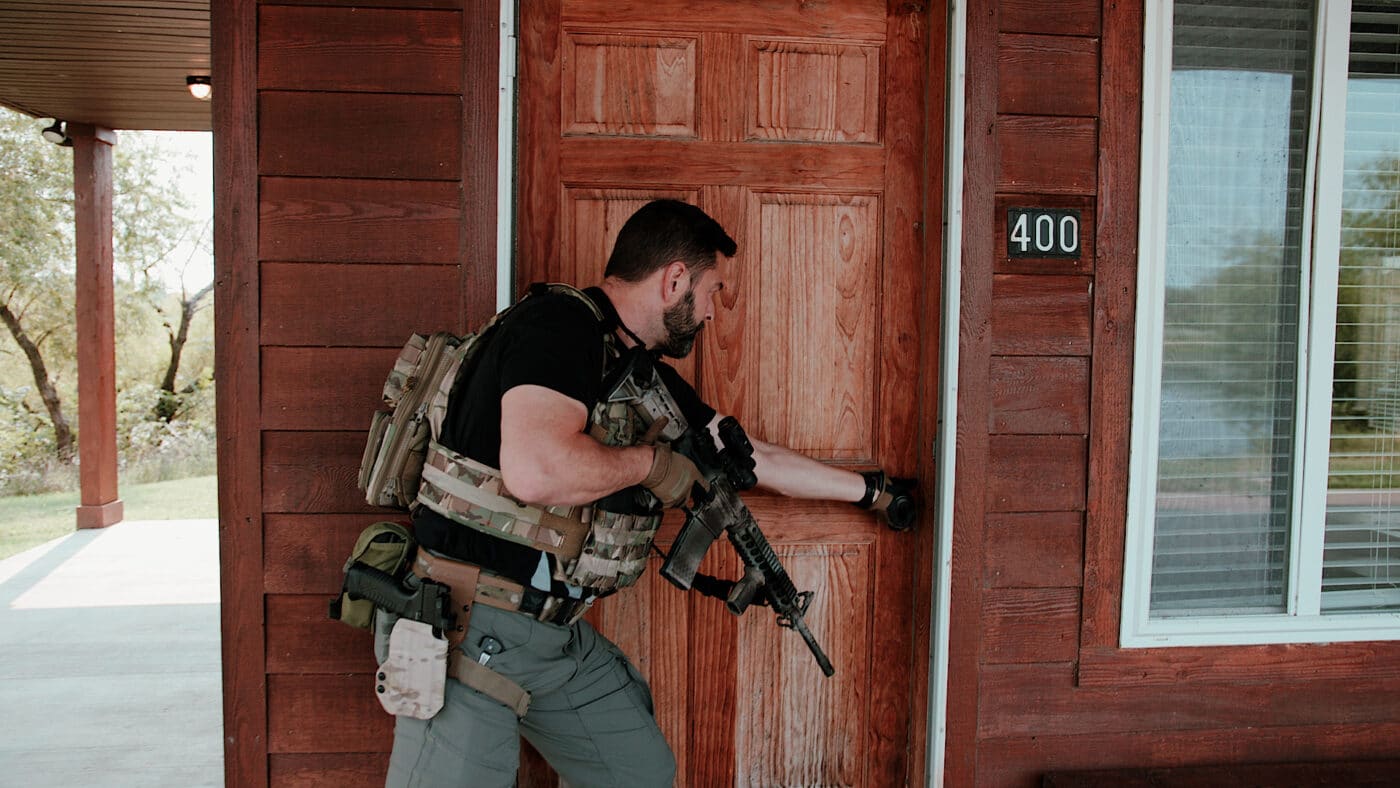
The basics of one-man room clearing are pretty simple. LaVelle reminds us off the bat that “you’re going to miss something” when you are by yourself. Unless you have eyes in the back of your head, you can’t look everywhere at once. The military adage of “slow is smooth, and smooth is fast” rings true here. In our scenario, we still maintain the element of surprise, which is also our greatest asset.
The Steps
When entering the home or any corner for that matter, you need to enter through the threshold as fast as possible — don’t stay skylighted for the threat to have an easy target. When entering, you advance to the first corner of the room and from there sweep over the rest of the room, with your muzzle searching for threats. This whole process should be as lighting fast as you can make it. From here, you dominate the room.
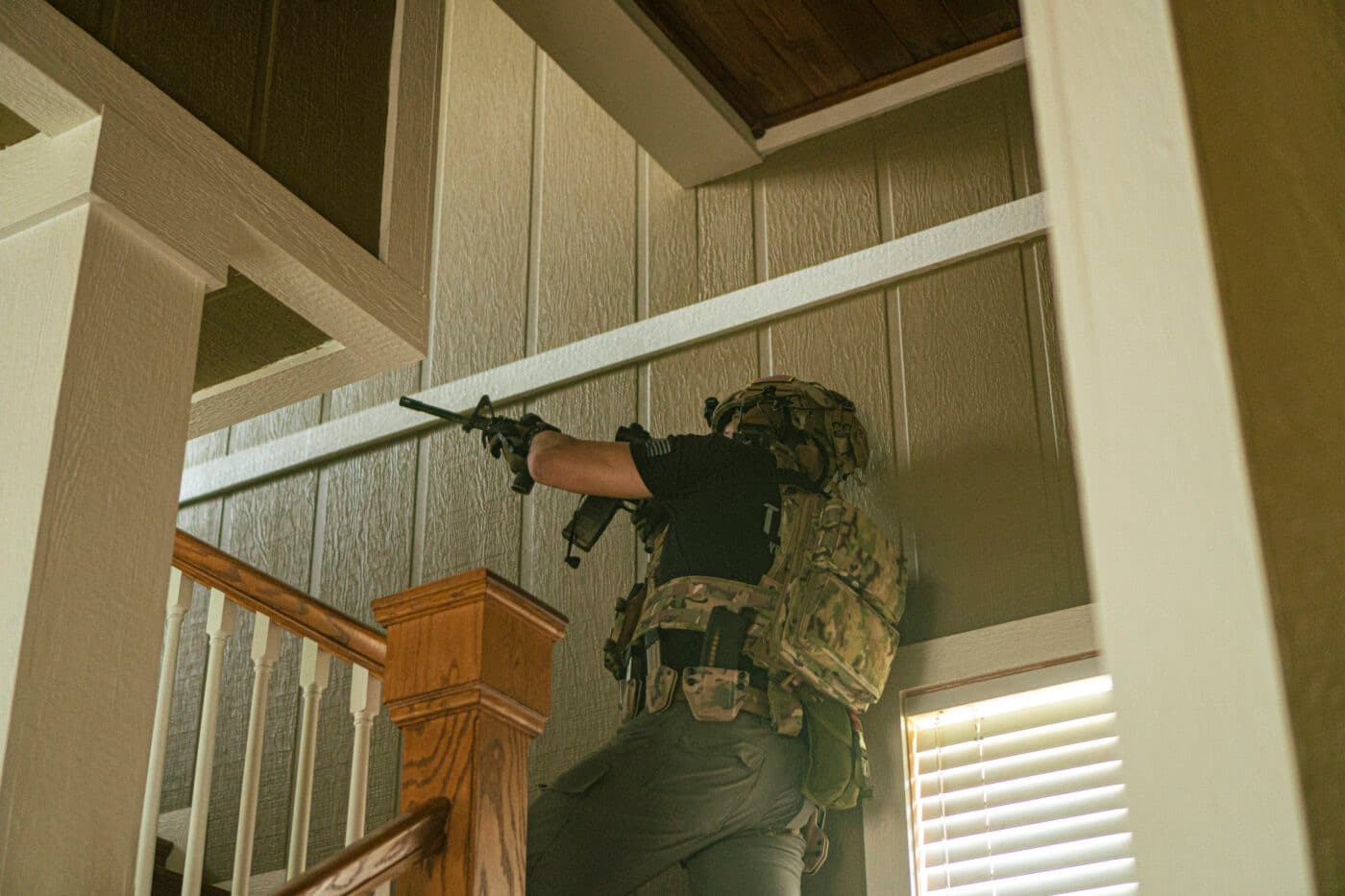
The next step is to move through the house, room by room, exposing yourself as little as possible. LaVelle teaches, assuming the element of surprise is still on your side, to skip doors that are closed as opening doors might alert a threat in the house of your exact location due to the sound. LaVelle checked the first room with an open door, entering the same way, and then proceeded to clear the first floor. All of this has to happen while keeping an eye on the staircase in case a threat emerges.
When it comes to clearing staircases, you want to walk on the outside edge of the staircase that lets you peer most into the above space. If the staircase opens up with a hallway for example that opens in both directions right and left, then just proceed slowly, trying to shift and see as much as you can of each side as you move up.
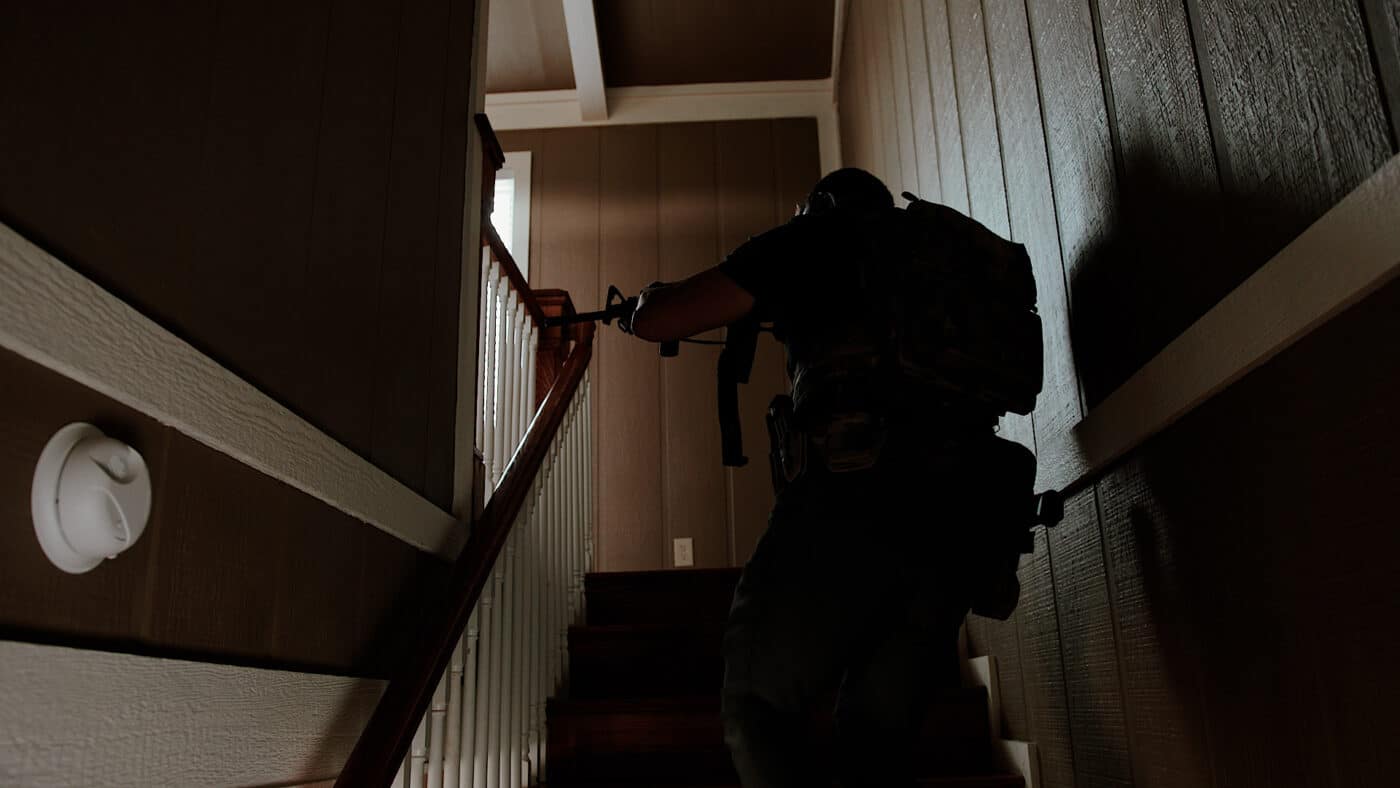
After an initial search was done, LaVelle decided to go back and open the doors he missed, now feeling more comfortable making noise in the home. A pocket door, one of the remaining doors left closed, is a challenge because it cannot swing out of the way. You’d have to push it hard enough to open it and proceed with the “clear.” When clearing, never stand right in front of a doorway. Doorways are easy targets that threats can blindly fire into when they feel threatened. So, only open them from a side approach.
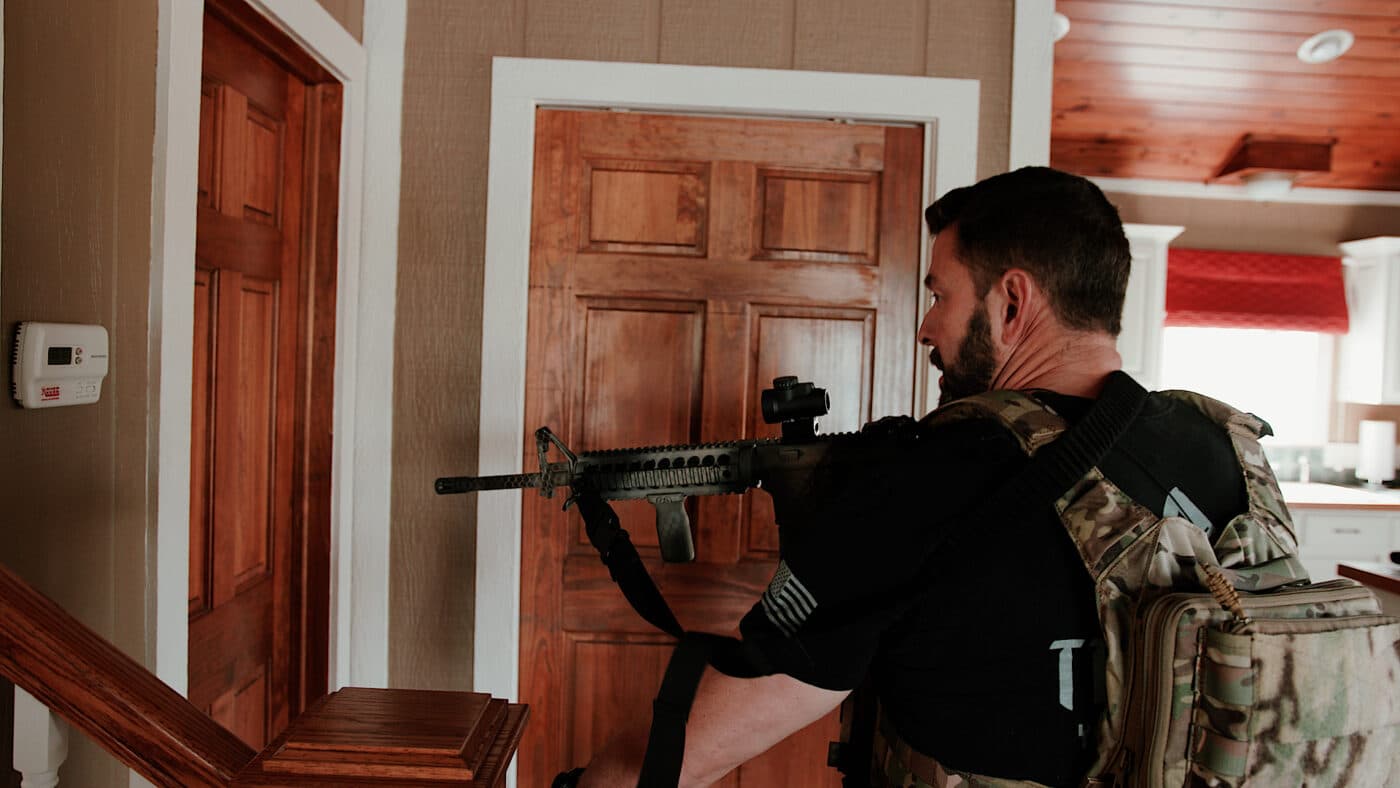
After the rooms had been cleared, LaVelle did a more slow and methodical search, opening things like cabinets and closets. Knowing the rest of the house is clear lets you rest a little easier regarding rear threats as you search the details.
Conclusion
One-man room clearing is a challenge, and that’s why professionals never do it alone. They have a team that clears the structure and a team on the outside providing security, and marksmen providing overwatch. To see LaVelle walk through the structure explaining as he goes, be sure to check out the video at the top of the page.
Editor’s Note: Be sure to check out The Armory Life Forum, where you can comment about our daily articles, as well as just talk guns and gear. Click the “Go To Forum Thread” link below to jump in!
Join the Discussion
Featured in this video
Continue Reading
Did you enjoy this video?

 66
66








